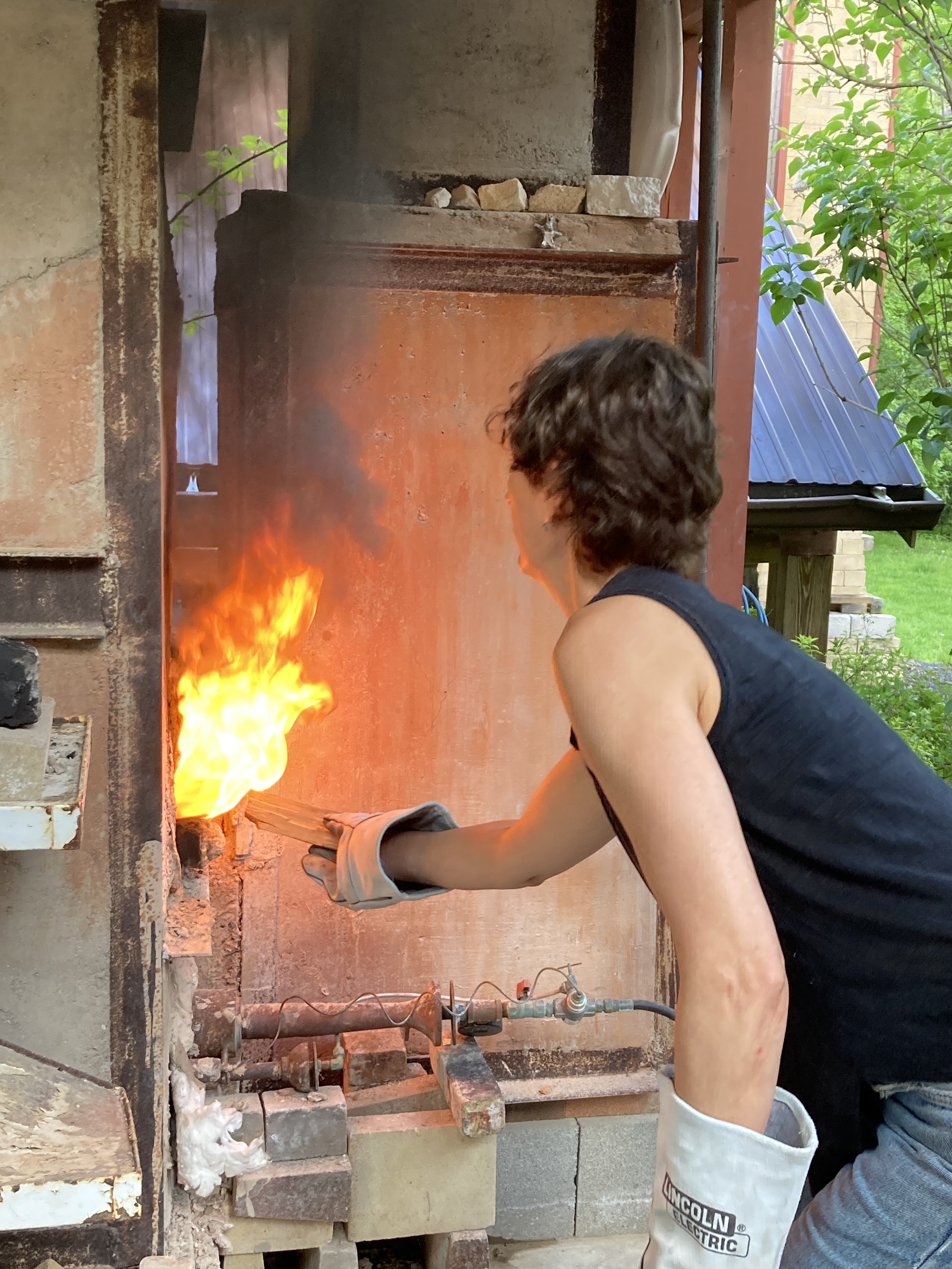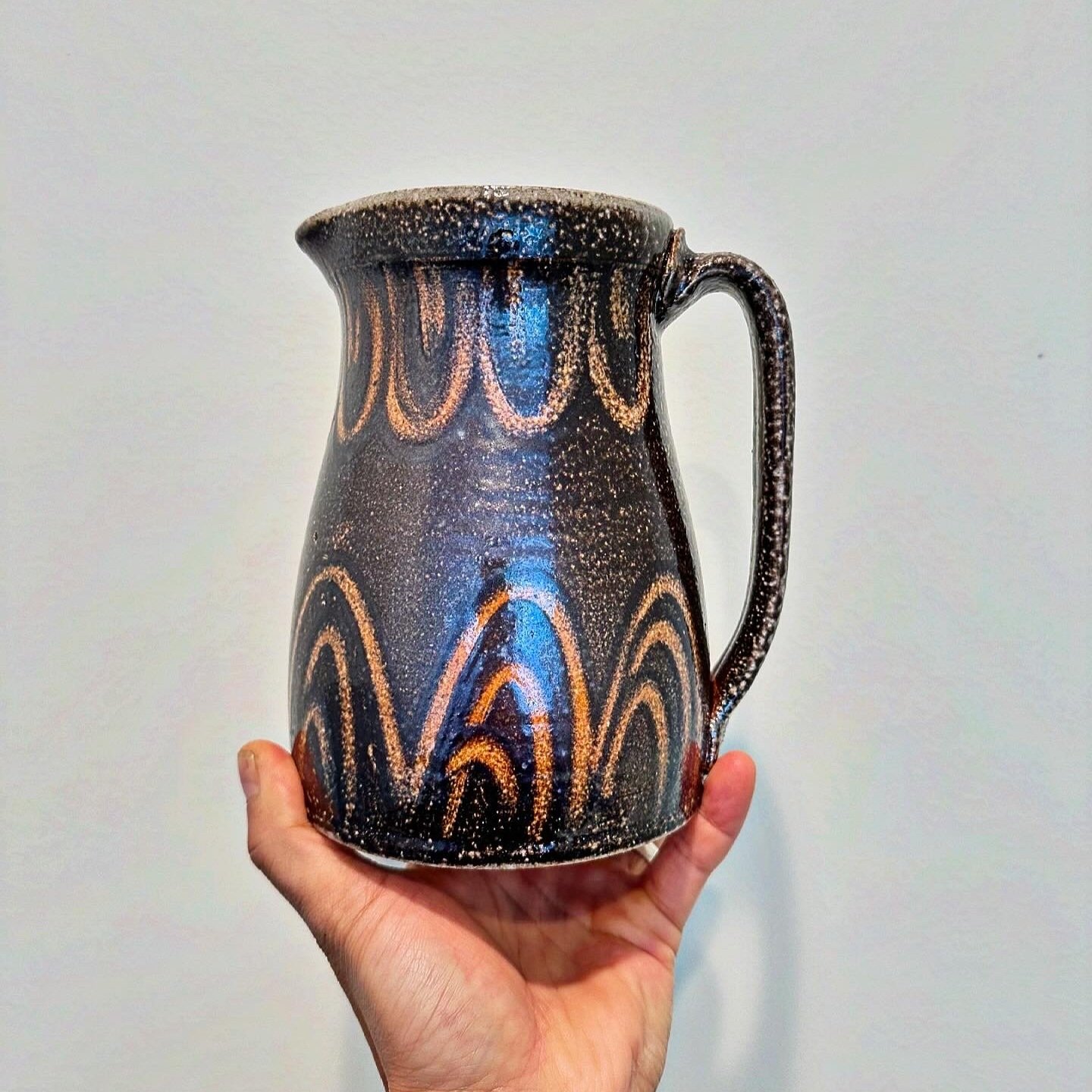 Image 1 of 15
Image 1 of 15

 Image 2 of 15
Image 2 of 15

 Image 3 of 15
Image 3 of 15

 Image 4 of 15
Image 4 of 15

 Image 5 of 15
Image 5 of 15

 Image 6 of 15
Image 6 of 15

 Image 7 of 15
Image 7 of 15

 Image 8 of 15
Image 8 of 15

 Image 9 of 15
Image 9 of 15

 Image 10 of 15
Image 10 of 15

 Image 11 of 15
Image 11 of 15

 Image 12 of 15
Image 12 of 15

 Image 13 of 15
Image 13 of 15

 Image 14 of 15
Image 14 of 15

 Image 15 of 15
Image 15 of 15
















May 30, 31 and June 2nd- Ian Basset: Fundamentals for Soda Firing
“I am drawn to soda and wood firing. I experiment with numerous flashing slips and several commercial clay bodies where I slowly develop my vocabulary to achieve surface results and colors that are of interest to me. Wood and soda firing provide subtle and dramatic surfaces that I find to be alluring. This tension creates a balance and sense of harmony that I love exploring.” - Ian Basset
In this 3 day workshop, students will participate in loading, glazing and firing work for a downdraft gas kiln. Various strategies and techniques will be discussed and applied. Considering locations the kiln, spacing, clay bodies, glazes, slips, firing style and wadding approaches all will be discussed and explored. This workshop aims to learn and understand the soda firing process and broaden one's understanding of how fire, clay and soda all accumulate to make beautiful fired ceramics. For this three day firing workshop students will glaze work and load the kiln as a group on the first day, and participate in strategies for firing a gas reduction kiln, introducing soda into a kiln, and reduction cooling that gas kiln. After the firing the kiln will cool, and students will return for a day of opening the kiln and discussion on the firing results.
Participants will bring Each participant should bring enough work to fill approximately 2-2.5 cubic feet of bisque fired work made from cone 10 clays. We also encourage students to bring a few extra “stuffer” pieces that are approximately 3x2x2. These are not priority pieces, but are easy to use to fill gaps in the kiln, and can be added if there is extra space. After registration participants will receive an email with a list of cone 10 clays and any extra information on the workshop.
6 participant maximum
Workshop Schedule:
Day-1: Students arrived at Oki Doki Studio at 9:30 a.m. The group will spend the day discussing glazing and loading strategies with Ian as they load the kiln together, and discuss the second day of firing the kiln.
Day-2: Students arrive at The Oki Doki Studio between 12:30 and 1 for discussion on gas firing techniques, and prepare to introduce soda into the kiln. This can be a long day with the firings potentially wrapping up between 7 p.m. and 8:30 p.m. (depending on the firing).
The kiln cools for 2 days after the firing. Students will return to the studio for opening day.
Day-3: 10 a.m. students return to The Oki Doki Studio to open and unload the kiln, and have a group critique to digest the outcome of the firing. The group will clean up the kiln, and also talk about strategies for cleaning and finishing the fired work.
“I am drawn to soda and wood firing. I experiment with numerous flashing slips and several commercial clay bodies where I slowly develop my vocabulary to achieve surface results and colors that are of interest to me. Wood and soda firing provide subtle and dramatic surfaces that I find to be alluring. This tension creates a balance and sense of harmony that I love exploring.” - Ian Basset
In this 3 day workshop, students will participate in loading, glazing and firing work for a downdraft gas kiln. Various strategies and techniques will be discussed and applied. Considering locations the kiln, spacing, clay bodies, glazes, slips, firing style and wadding approaches all will be discussed and explored. This workshop aims to learn and understand the soda firing process and broaden one's understanding of how fire, clay and soda all accumulate to make beautiful fired ceramics. For this three day firing workshop students will glaze work and load the kiln as a group on the first day, and participate in strategies for firing a gas reduction kiln, introducing soda into a kiln, and reduction cooling that gas kiln. After the firing the kiln will cool, and students will return for a day of opening the kiln and discussion on the firing results.
Participants will bring Each participant should bring enough work to fill approximately 2-2.5 cubic feet of bisque fired work made from cone 10 clays. We also encourage students to bring a few extra “stuffer” pieces that are approximately 3x2x2. These are not priority pieces, but are easy to use to fill gaps in the kiln, and can be added if there is extra space. After registration participants will receive an email with a list of cone 10 clays and any extra information on the workshop.
6 participant maximum
Workshop Schedule:
Day-1: Students arrived at Oki Doki Studio at 9:30 a.m. The group will spend the day discussing glazing and loading strategies with Ian as they load the kiln together, and discuss the second day of firing the kiln.
Day-2: Students arrive at The Oki Doki Studio between 12:30 and 1 for discussion on gas firing techniques, and prepare to introduce soda into the kiln. This can be a long day with the firings potentially wrapping up between 7 p.m. and 8:30 p.m. (depending on the firing).
The kiln cools for 2 days after the firing. Students will return to the studio for opening day.
Day-3: 10 a.m. students return to The Oki Doki Studio to open and unload the kiln, and have a group critique to digest the outcome of the firing. The group will clean up the kiln, and also talk about strategies for cleaning and finishing the fired work.
“I am drawn to soda and wood firing. I experiment with numerous flashing slips and several commercial clay bodies where I slowly develop my vocabulary to achieve surface results and colors that are of interest to me. Wood and soda firing provide subtle and dramatic surfaces that I find to be alluring. This tension creates a balance and sense of harmony that I love exploring.” - Ian Basset
In this 3 day workshop, students will participate in loading, glazing and firing work for a downdraft gas kiln. Various strategies and techniques will be discussed and applied. Considering locations the kiln, spacing, clay bodies, glazes, slips, firing style and wadding approaches all will be discussed and explored. This workshop aims to learn and understand the soda firing process and broaden one's understanding of how fire, clay and soda all accumulate to make beautiful fired ceramics. For this three day firing workshop students will glaze work and load the kiln as a group on the first day, and participate in strategies for firing a gas reduction kiln, introducing soda into a kiln, and reduction cooling that gas kiln. After the firing the kiln will cool, and students will return for a day of opening the kiln and discussion on the firing results.
Participants will bring Each participant should bring enough work to fill approximately 2-2.5 cubic feet of bisque fired work made from cone 10 clays. We also encourage students to bring a few extra “stuffer” pieces that are approximately 3x2x2. These are not priority pieces, but are easy to use to fill gaps in the kiln, and can be added if there is extra space. After registration participants will receive an email with a list of cone 10 clays and any extra information on the workshop.
6 participant maximum
Workshop Schedule:
Day-1: Students arrived at Oki Doki Studio at 9:30 a.m. The group will spend the day discussing glazing and loading strategies with Ian as they load the kiln together, and discuss the second day of firing the kiln.
Day-2: Students arrive at The Oki Doki Studio between 12:30 and 1 for discussion on gas firing techniques, and prepare to introduce soda into the kiln. This can be a long day with the firings potentially wrapping up between 7 p.m. and 8:30 p.m. (depending on the firing).
The kiln cools for 2 days after the firing. Students will return to the studio for opening day.
Day-3: 10 a.m. students return to The Oki Doki Studio to open and unload the kiln, and have a group critique to digest the outcome of the firing. The group will clean up the kiln, and also talk about strategies for cleaning and finishing the fired work.
Before purchasing your workshop reservation please review our cancellation policy
When making your plans, please consider your participation means the studio and instructors are purchasing supplies months before the workshop. You are making a commitment to the instructor, and reserving a spot that someone else could potentially take.
Cancellations (minus the $75 cancellation fee) can be made up to six weeks before the workshop.
While we understand that emergencies happen, any cancellation made after the six week period is nonrefundable. If the cancellation is due to an emergency contact us by phone first, (845) 332-6585, and follow up with a voice mail and email if you cannot reach us. You will be given a credit for a similarly priced workshop at a later date within one calendar year of your workshop.
